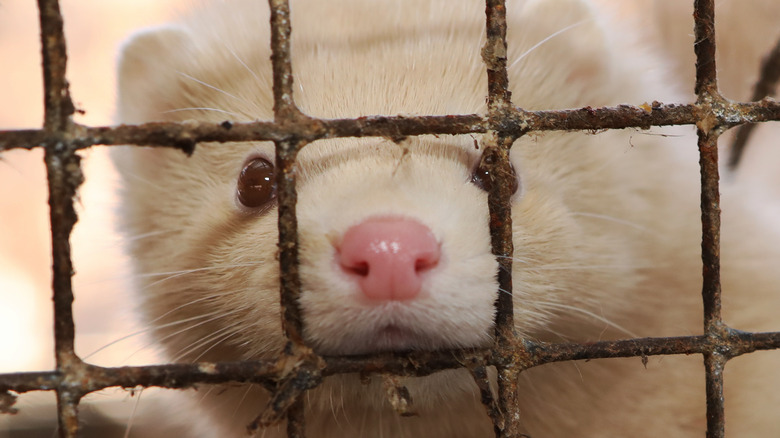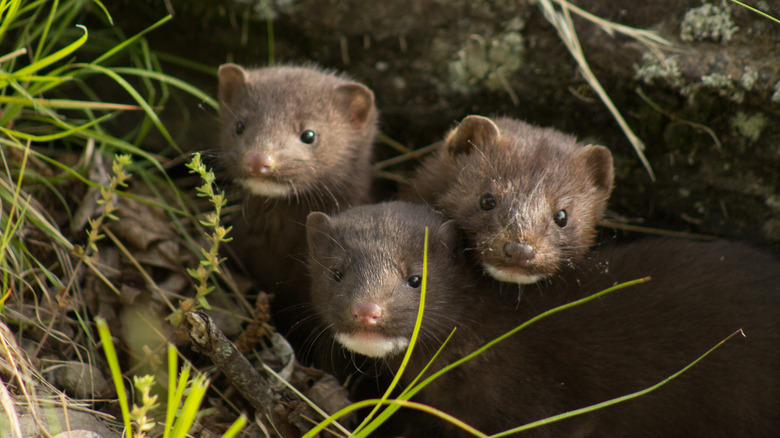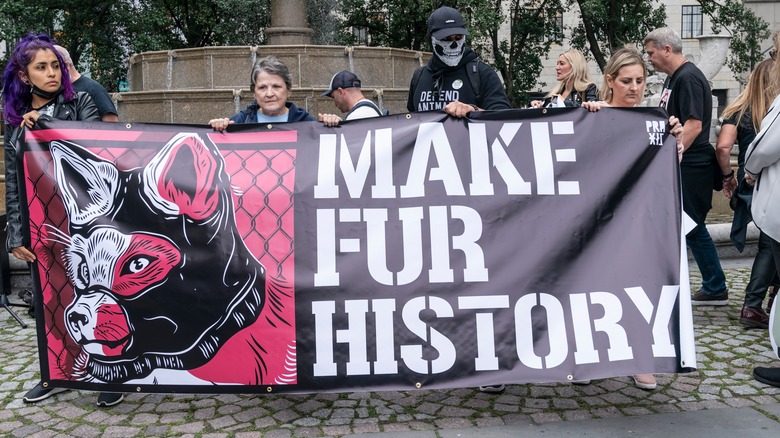What Do Mink Farms Do?
According to Britannica, when fully grown, most minks max out at around 30 inches long, with their tail included, and the animals typically weigh less than five pounds. For this reason, these small carnivorous mammals are typically not thought of as a threat to humans, though they can sometimes be a nuisance or pest, as the Internet Center for Wildlife Damage Management (ICWDM) explains. But how about 10,000 minks let loose near your town?
That seems like it might cause a problem, at least for the small backyard pets and small farm animals minks sometimes like to kill and eat, and in mid-November, 2022, that's exactly what happened in rural northwest Ohio, according to USA Today reporting. The strange incident reportedly had the hallmarks of an animal rights organization, and it also shines a light on the lucrative mink farming industry, with nearly 300 mink farms across 23 U.S. states, according to the website of the Fur Commission USA, an organization representing U.S. mink farmers.
As many as 40,000 minks were let loose
The Ohio minks were released near the border with Indiana. As Fort Wayne, Indiana news outlet WANE reports, one estimate suggests that as many as 25,000 minks were let loose, but most were corralled and captured, with 10,000 animals believed to still be on the run. Some reports put the number of mink sprung from their cages at 40,000. It's unclear who was responsible for the vandalism, but the words "ALF" and "We'll Be Back" were spray painted near where the farm's fence was cut, leading some to believe the Animal Liberation Front (ALF) could be to blame.
Notably, the State of Ohio, where the 2022 mink farm jailbreak took place, is not a major center for the mink farming industry, with much larger concentrations of predominantly family-owned mink farms clustered in states like Wisconsin, Utah, Idaho, Oregon, and Minnesota, as the Fur Commission USA website goes on to explain. According to the Van Wert Times Bulletin, ALF claimed responsibility for a similar 2013 mink farm incident at which time some 150 to 200 minks were let loose from a farm in Hoagland Township, Ohio.
U.S. mink farms supply pelts to the fur industry
As the Fur Commission USA also notes, minks are farmed for their pelts, with millions of mink pelts produced annually, generating hundreds of millions of dollars in revenue. An estimated 85% of all mink pelts in the fur trade come from U.S. mink farms, which are often family owned. According to Fur Commission USA, minks on those farms are raised and cared for under strict animal health and welfare guidelines. Wisconsin alone produces more than 1 million mink pelts each year under strict standards, many of which some mink farmers reportedly adhere to voluntarily.
The raising of mink for pelts used in the high-end fashion industry draws sharp criticism from animal welfare activist organizations such as ALF and People for the Ethical Treatment of Animals. As The New York Times reported in 2020, the biggest mink fur markets were in China, and a COVID-19 pandemic-related cull of hundreds of thousands of animals in Denmark caused a spike in mink pelt prices internationally. Speaking with The Times, Sarah Willersdorf, a luxury goods industry consultant with the Boston Consulting Group, said fur still sells well in some parts of the world, but increasingly, younger consumers "... demand fur-free clothing."


